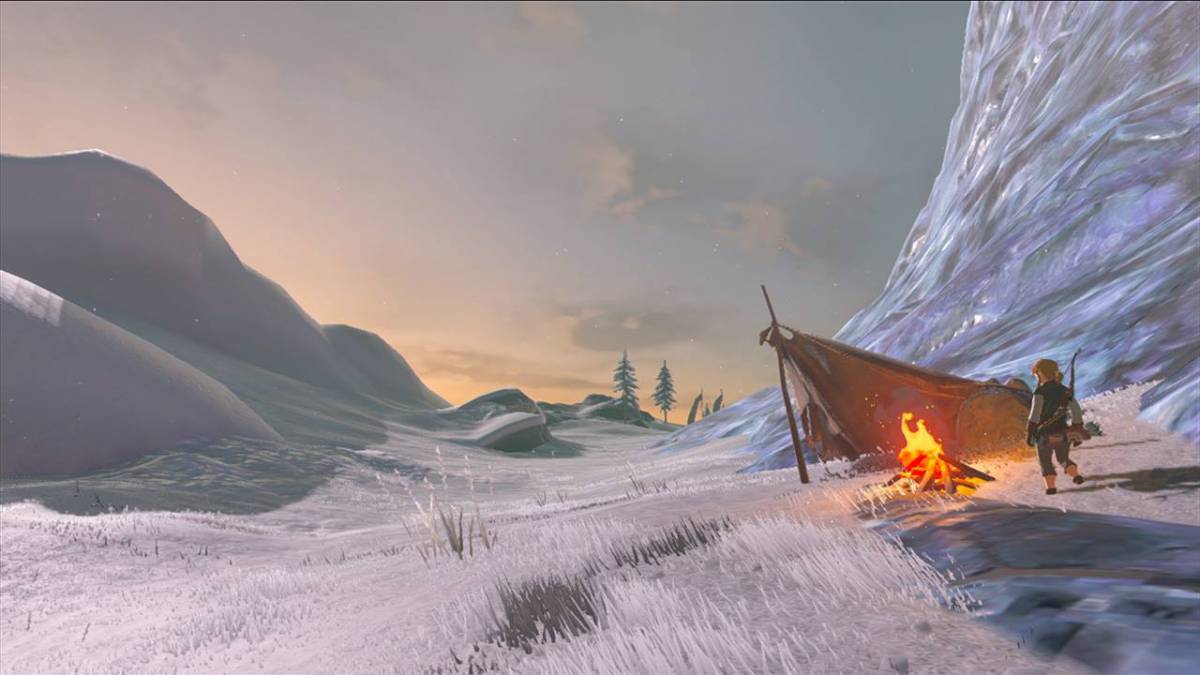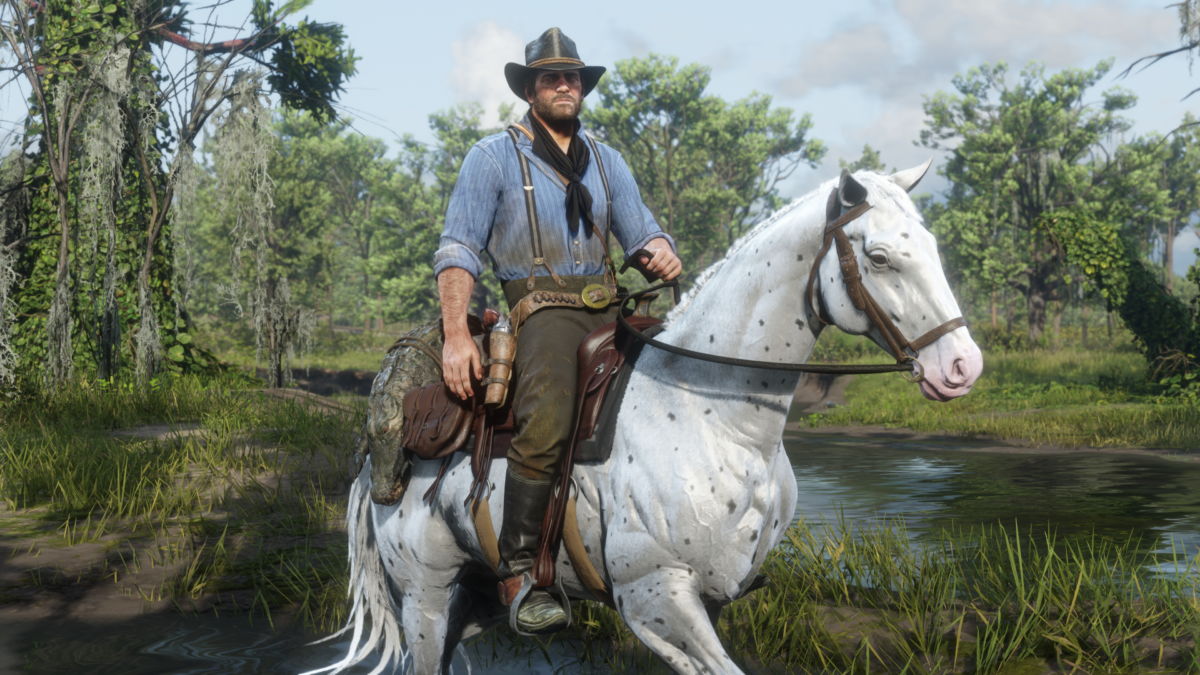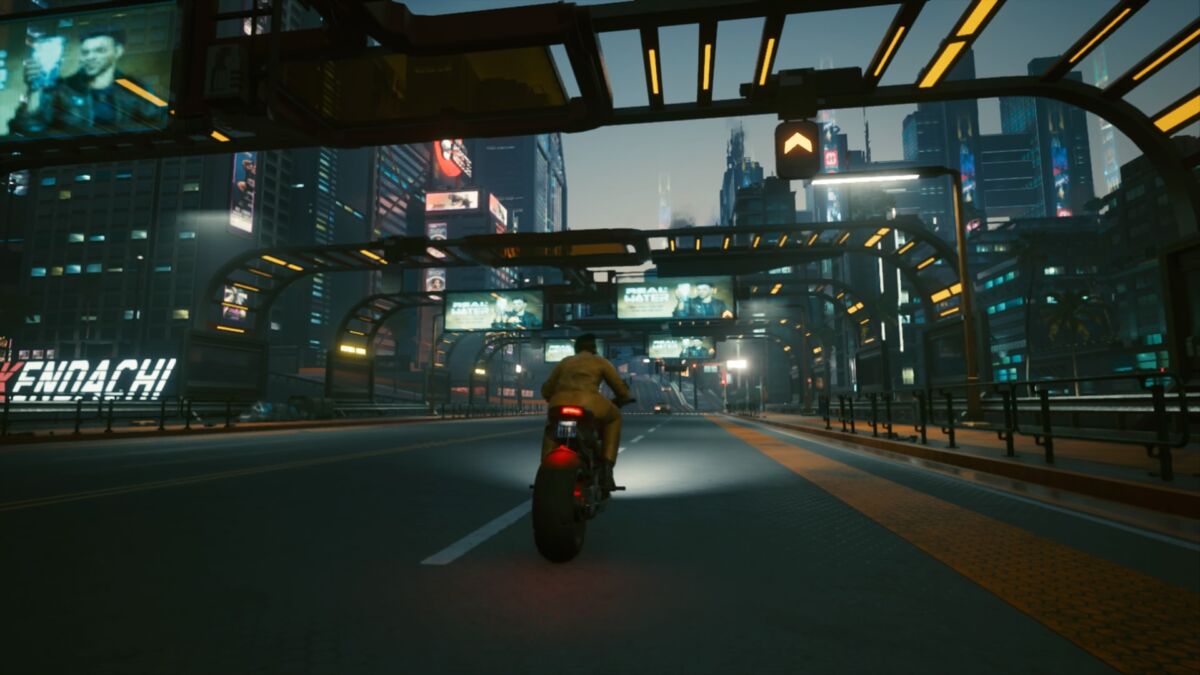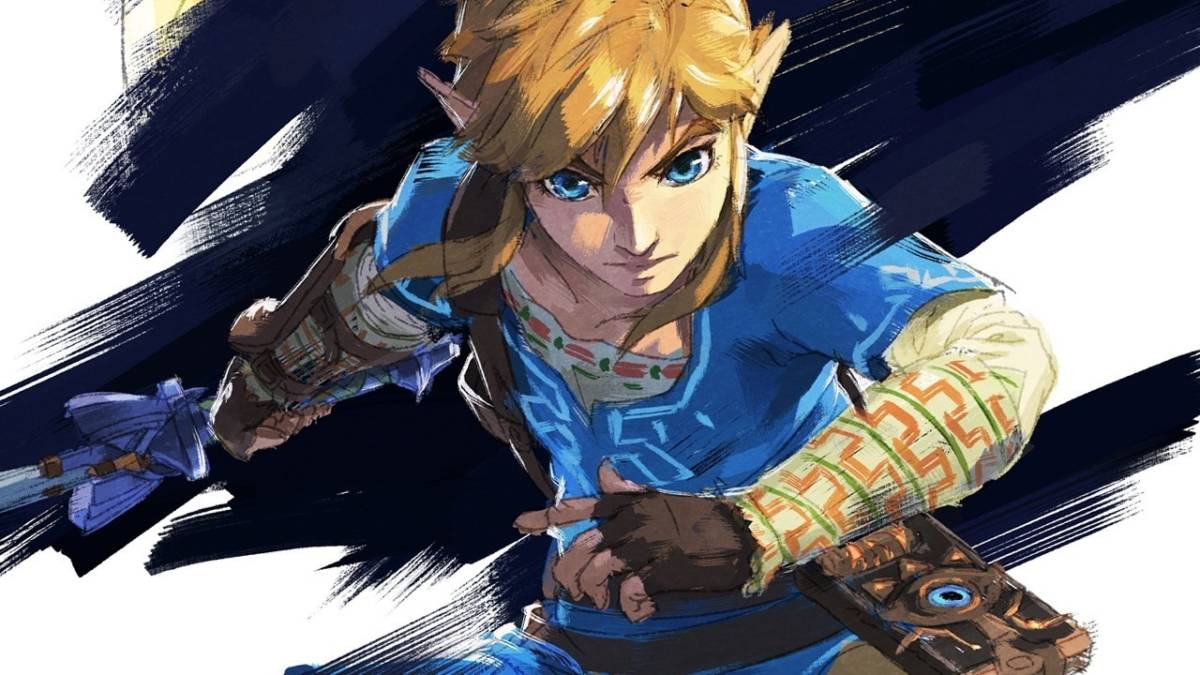When we play video games, we are engaging in a scripted exchange, and consenting to pick up a role that’s been assigned to us, the role of Main Character. We agree to be the character the game says we are, and do the actions the story of the game dictates we do, and go to the places the game says we should go. That’s where the story is, and we are the Main Character after all. In open world games, that story might be on the other end of the map, more often than not, so the game gives us the power to cut to the good part — fast travel to the next quest icon and get going.
However, while fast travel from one end of the map to another in the blink of an eye (or however long a loading screen takes) is definitely convenient, it does disrupt the flow of the game. It functions like a scene transition in a stage play — every actor is offstage, out of character, waiting for the lights to come back on. You literally stop playing, stop existing in the fictional world, until you render back in at your new location. And while this feature has definitely been a boon for eager gamers ready to storm right into the next quest, I’ve actually found myself shying away from it in most games.
When you don’t fast travel, and rather journey to your next mission on foot (or horseback, or by car, etc.), you don’t break immersion. There is no scene transition — every one stays “in character” as you traverse the world. It’s called Hero’s Journey, after all, not a Hero’s Destination. What do we miss when we speed through a game via fast travel?

For example, in The Legend of Zelda: Breath of the Wild, not only did I try to avoid using the fast travel shrines, I also almost never rode a horse. My Link scoured the land of Hyrule nigh-entirely on foot. Moving on horseback prevented me from interacting with items in the world and drinking in the game’s picture-perfect art direction. Furthermore, when so much of the game’s exploration involves climbing, I felt more free and in control of my narrative by staying unmounted. Link had been asleep for a hundred years — I figured he might enjoy some time to take a stroll and get some exercise.
In Red Dead Redemption 2, I did avail myself of riding on horses or wagons, if only because Arthur Morgan has the top speed of an office chair with a janky wheel. However, I literally never once in my entire meandering 60+ hours of RDR2, used the game’s fast travel. My version of Arthur was the kind of guy to spend weeks away from camp, crisscrossing his map one impulsively-begun side quest at a time.
This feels in line with developer Rockstar’s intentions though — the game is explicitly about the tenuous relationship between humanity and nature and the endless wonders and dangers lurking outside of constructed society. The fast travel system in Red Dead Redemption 2 also isn’t exactly accommodating: you have to return to camp in order to travel to other settlements, which means going out of your way to “save time.” You can also buy a ticket for a train or a stagecoach, but the need to literally journey to these travel options can at times feel like more trouble than just taking the direct path to your next destination.

When I played Cyberpunk 2077, a game I didn’t particularly love, I tended to shy away from the game’s fast travel access points and instead schlep my glitchy avatar through Night City the long way. It’s not because Cyberpunk has really enjoyable driving mechanics — it doesn’t, and the first-person perspective for driving actually made me motion-sick. One reason I liked taking the scenic route in Cyberpunk is because of how flawed it is: Driving through Night City is like playing Pokemon Go for collecting glitches: catapulting another car into a building, clipping through the freeway and fall into an endless digital ocean, T-posing on my motorcycle, the list goes on and on — the same sense of discovery that pushed me forward in Red Dead or Zelda persists here, just in a maybe more ironic form.
Driving around in Cyberpunk also reminded me of when I lived in LA. While Night City is an imperfect and muddy recreation of a California metropolis, it’s close enough for me to get nostalgic. The endless barrage of advertisements, the cluttered skyline and the at times baffling road system and spaghetti-esque overpasses all hit just enough of a memory to feel familiar. It’s my old home, as sprawling and geographically unpleasant as I remembered it, only with slightly more stabbing than the real thing.

Last year’s The Pathless, a game I did particularly love, is an open world game (albeit on a smaller scale than Cyberpunk or Zelda) that does away with fast-travel entirely. The game’s main action is traversal — you dash and slide your way across a beautiful world, gliding with your eagle pal and running as fast as you can. The Pathless crystalizes what we miss out on when we jump from fast travel point to fast travel point: the primal joy of motion. It’s a game that I feel like Isaac Newton would have loved. The physics of movement and energy are at the forefront of The Pathless — the science of speed translated into something you feel.
Speaking of games with sensational sensory treats for travel, both 2018’s Spider-Man and 2020’s Spider-Man: Miles Morales deserve seats at the table for best sense of motion and least-wanted fast travel. I don’t think I ever rode the subway a single time in either game. Why would I, when I was finally playing games that made web-slinging feel like the best super-power in the world? Riding the subway is for regular people, not Spider-men!
So through all these examples and case studies, what can we actually conclude about the joy of moving through open worlds? For starters, there’s certainly the fact that these worlds are full of things to do. Galloping across fields probably isn’t that exciting if there’s nothing to do, or the things that there are to do don’t feel engaging or feel like busywork (we might call this Ubisoft’s Law). Our adventures need things to happen in order to feel like adventures.

However, there’s also something appealing about the space in-between surprise encounters and icons on the mini-map. Being alone with my thoughts under Red Dead’s starlit night sky, or cruising to the admittedly-silly radio stations in Cyberpunk (my favorite being Royal Blue Radio, the game’s acid-woozy jazz station). In other words, one joy of traversal the long way is the feeling of a daily commute.
Of course, there are good reasons behind fast travel: these games are often very long, long enough on their own without needing to be padded out with extraneous travel. For people without much time to themselves, they might not want to spend some of the only hour or two they have after work caught up in galloping down the same dirt path they’ve galloped ten times before. There aren’t many hours in a day, but there can be a lot of hours in a Triple-A open world video game, so if someone wants to skip the detours and just play the hits, that makes sense. You bought the video game to be a Main Character, not a commuter, after all.
Given that the ongoing Covid-19 pandemic has grounded me like many others, I no longer have a daily commute during which to space out, listen to podcasts, or just vaguely exist. That weird, brain-static feeling of not doing anything besides existing while on a bus or a subway or in a driver’s seat, is something I didn’t realize I’d come to miss.

Playing games without fast traveling, and taking the time to hoof it from place to place, means that my character, like me, has a little bit of time to collect their wits between big fights. Sure, Spider-man could hop on the subway and be fighting The Vulture in a few seconds, but listen, we just fought like thirty supercops with jetpacks, and we could use a few minutes of web-swinging to clear our heads.
On the topic of gaming during the pandemic, world exploration also provides us a simulation of a world where we can be outside and near others — imagine that!
On a deeper level, this sense of reclaiming what we’ve lost in a virtual space goes deeper than just the act of being near others. Many of us live cluttered, busy lives — with jobs and routines and responsibilities. We couldn’t go wandering out toward some vaguely interesting mountains, even before infinite lockdown began. Our commutes had a set number of destinations — like a limited range of fast travel choices.
By eschewing fast travel, and moving through game worlds the long way, we open ourselves up to the chance at random encounters, allow our brains time to drink in the details surrounding us, allow our minds to disengage and just “be” for a few precious moments, and experience the strange freedom of having no linear requirement on where to go next. It’s a strangely banal sensation, yet one I always cherish when it comes to me. Even though we have a map of the world, and we know where we must go eventually, the game gives us the room to take it slow, and find our own space in the world. It’s a courtesy that the real world is increasingly averse to offer us. And so it’s a shame not to take that opportunity.
READ NEXT: Why Dead Space’s First Level Is A Masterpiece
Some of the coverage you find on Cultured Vultures contains affiliate links, which provide us with small commissions based on purchases made from visiting our site. We cover gaming news, movie reviews, wrestling and much more.



